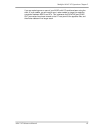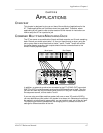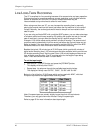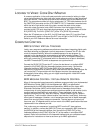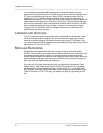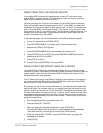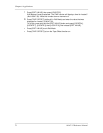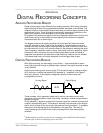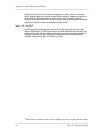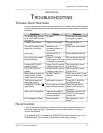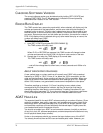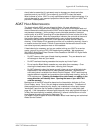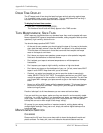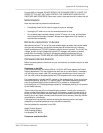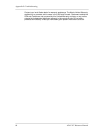
Digital Recording Concepts: Appendix A
ADAT XT Reference Manual 73
APPENDIX A
DIGITAL RECORDING CONCEPTS
ANALOG RECORDING BASICS
Digital recording works very differently from analog recording. With analog recording,
tape containing millions of tiny magnetizable particles move past a record head. The
magnetic field around this head fluctuates according to the audio signal present at the
tape recorder’s input. These fluctuations permanently rearrange the particles on the
tape to form a pattern that is analogous to the original audio signal.
On playback, the patterns on tape are read by a separate playback head (or from the
record head, set up to read instead of record signals) that converts the magnetic
fluctuations back into an audio signal.
The biggest problem with analog recording is that the tape itself alters the sound
originally recorded on tape. Tape hiss is one problem; it superimposes a low-level
rushing noise onto the audio signal. Although there are ways to minimize noise, such
as noise reduction circuitry, this colors the sound in the process of masking the noise.
Tape’s frequency response is also an issue. Tape has a hard time “absorbing” higher
frequencies, which can dullen the sound. Moving tape faster allows the heads to
magnetize more particles and extends the high frequency response, but the tradeoff
is increased tape costs, and heftier transports to move bigger reels of tape.
DIGITAL RECORDING BASICS
With digital recording, the technology is very similar — tape moves past a record
head, and plays back through a playback head. However, the signal recorded on tape
is very different.
Audio signals entering each channel of the XT first pass through an analog-to-digital
(A/D) converter, a device that takes 48,000 samples or “snapshots” of the signal
level every second
1
. Each sample is assigned a specific numeric value that
corresponds to its level.
A/D
Analog Signal Digital Signal
These numbers, which represent coded audio, are then converted into an audio
signal that can be recorded on tape. Fortunately, recording a number on tape doesn’t
degrade the signal.
During playback, a digital-to-analog (D/A) converter reads the numbers from tape and
outputs a corresponding level. This creates a “stairstep” reconstruction of the original
signal, which is close to (but not exactly) the same as the original signal. To complete
the process, this stairstep signal is smoothed by a low pass filter. The result is
natural-sounding audio that sounds virtually unchanged from what was originally
recorded.
1
48,000 samples are taken per second at a sampling rate of 48 kHz; 44,100 samples
are taken per second at a sampling rate of 44.1 kHz.



